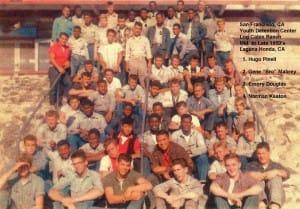by Jaan Laaman, political prisoner
It was with true sadness that, on Aug. 13, I received the news that legendary California prison activist Hugo Pinell was killed in a California prison. Let me share a few thoughts about the life and death of this extraordinary man.

I never personally knew Hugo Pinell. The simple reason for that is because Hugo Pinell was locked up in California state prisons for 50 years! That is insane. It is hard to wrap your mind around the reality of someone being held captive for 50 years. Even more insane, for most of those years he was held in isolation-segregation cells.
Hugo was just released from segregation and it is being reported that he was killed by two white prisoners. There was a serious uprising or riot that also took place at this time.
Hugo Pinell spent decades teaching, advocating and struggling for human rights, justice and dignity for prisoners. He taught and fought for racial and revolutionary unity among all prisoners.
Locked up in 1965, like many other prisoners at that time, Hugo became politicized inside the California prison system. In addition to exploring his Nicaraguan heritage, Hugo was influenced by activists like Malcolm X, Martin Luther King, as well as his comrades inside, including George Jackson. His leadership in combating the racism and brutality of prison officials made him a prime target for retribution and Hugo soon found himself in the notorious San Quentin Adjustment Center.
While in San Quentin, Hugo and five other politically conscious prisoners were charged with participating in the Aug. 21, 1971, rebellion, which resulted in the assassination of George Jackson by prison guards on that day. Hugo Pinell, Willie Tate, Johnny Spain, David Johnson, Fleeta Drumgo and Luis Talamantez became known as the San Quentin 6. They had a very public 16-month trial.
Hugo Pinell spent decades teaching, advocating and struggling for human rights, justice and dignity for prisoners. He taught and fought for racial and revolutionary unity among all prisoners.
The San Quentin 6 became a global symbol of unyielding resistance against the prison system and its violent, racist design.
As the California Prisons began to lock people up in long-term isolation and control unit facilities, Hugo was placed inside of the SHU (Security Housing Unit) in prisons including Tehachapi, Corcoran and Pelican Bay.
There, despite being locked in a cell for 23 hours a day, he continued to work for racial unity and an end to the torturous conditions and racially and politically motivated placement of people into the SHU. This work included his participation in the California Prison Hunger Strikes as well as supporting the Agreement to End Racial Hostilities in 2012.
Personally, I am of course upset that a brother like Hugo was killed by what I have to assume were some reactionary, fascist minded prisoners. But truly what I mainly feel is sadness, profound sadness at this news.
Hugo Pinell is gone. His bid, his sentence is now ended. After 50 years of captivity, that is not a bad thing. Even as an elderly person in his 70s, Hugo Pinell died in the struggle.
Despite being locked in a cell for 23 hours a day, he continued to work for racial unity and an end to the torturous conditions and racially and politically motivated placement of people into the SHU. This work included his participation in the California Prison Hunger Strikes as well as supporting the Agreement to End Racial Hostilities in 2012.
The hands that struck him down, it is reported, were prisoners, but the actual force that killed him was the capitalist police state prison system that holds 2.2 million men, women and children in captivity.
At the time of his death, Hugo had been locked behind bars for 50 years, yet his spirit was unbroken.
Hugo Pinell, we will remember you, brother, and your strong lifelong example of resistance. We will continue this resistance and this struggle for freedom.
Send our brother some love and light: Jaan Laaman, 10372-016, U.S. Penitentiary Tucson, P.O. Box 24550, Tucson, AZ 85734.





